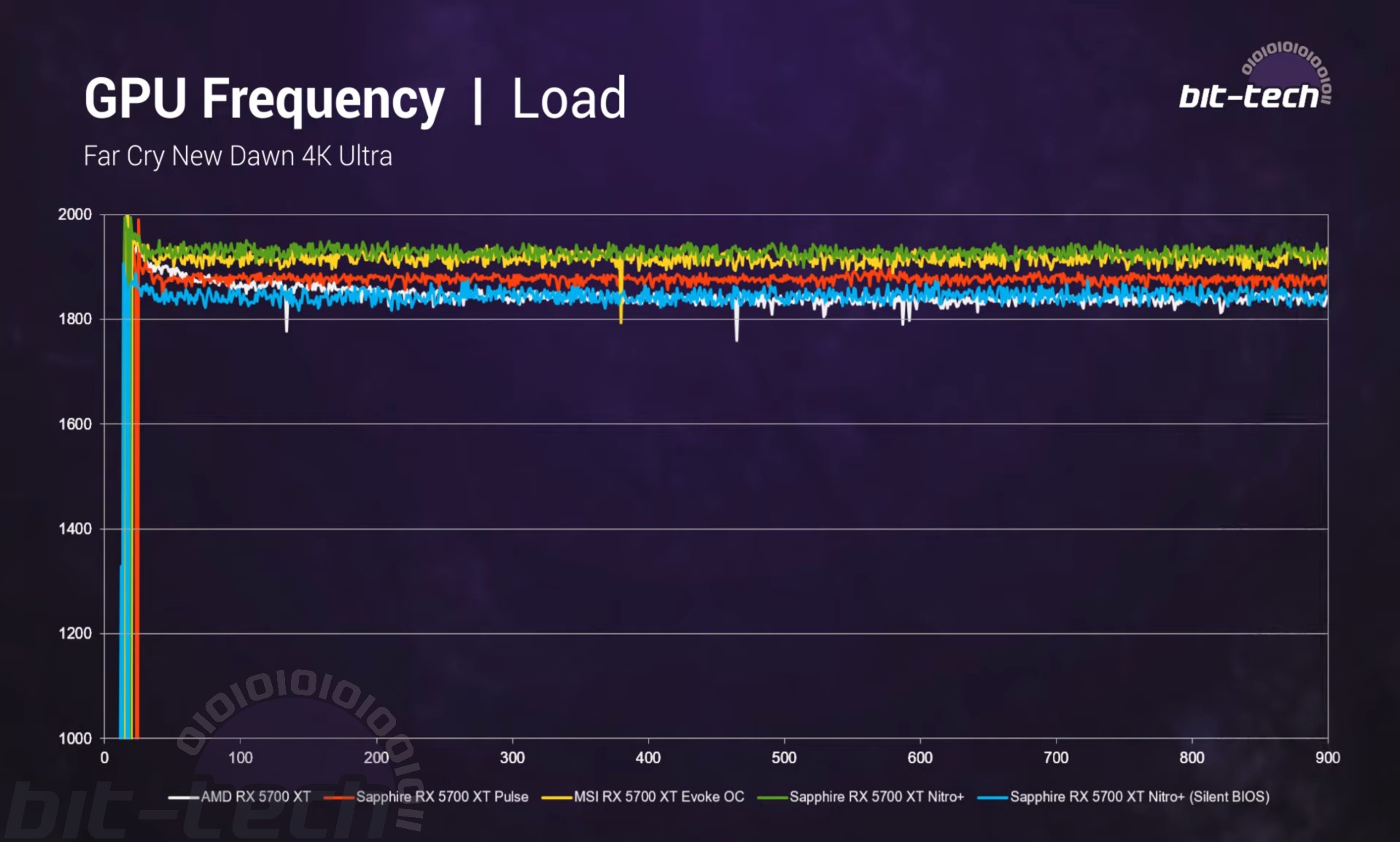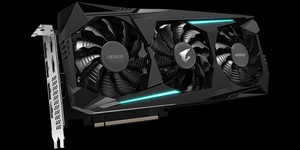Performance Analysis
For third-party graphics card reviews, we assume a basic familiarity with how the GPU in question stacks up in the wider market – read our original RX 5700 XT review for a better sense of that.
At 1080p, the Sapphire RX 5700 XT Nitro+ averages between 73fps and 122fps; it’s going to be fast or very fast in anything at this resolution. At 1440p, the range drops to 52fps-104fps, and the lowest 99th percentile frame rate is 36fps. That result comes in Metro Exodus, where in-game performance is known to be higher than the benchmark, so again you can be sure of smooth frame rates at this sweet spot resolution. We’ve foregone 4K testing, as we found it to be too demanding for this GPU, and again the original review will give you a sense of what to expect.

Versus competing Nvidia hardware, the RTX 2070 Super Founders Edition is 4.5 percent faster overall, while Sapphire’s new card is 6.5 percent faster than Gigabyte’s RTX 2060 Super Gaming OC, or 12 percent faster when looking at the stock-speed RTX 2060 Super FE. Titles in which AMD is relatively strong are Shadow of the Tomb Raider and Metro Exodus, while Nvidia does best in Total War: Three Kingdoms and The Division 2. This inter-game variance means you should seek out specific benchmarks if there’s a title or two that you’re most interested in.
As ever, something that changes the equation when comparing AMD to Nvidia is support for real-time ray tracing, which this card does not have. It’s still a niche technology in terms of titles it’s available in, but recent announcements have expanded the list to include some big hitters like Call of Duty: Modern Warfare and Cyberpunk 2077. There’ll be a frame rate hit to be aware of, and the quality of the implementation will vary by title too, but it’s still a fact that only RTX hardware lets you use it. How much that affects a purchasing decision will come down to your own priorities and game preferences.
Another worthwhile comparison is against AMD’s own RX 5700, for which we still only have reference results. Versus this card, Sapphire’s is 16 percent faster overall, and since they use the same architecture there is less variation between games.

When comparing to other RX 5700 XT implementations, it’s useful to start with a clock speed over time plot. What we see from the Nitro+ is near-identical performance to MSI’s Evoke OC here, with a clock speed under load that is comfortably and consistently above 1,900MHz. It is the faster card of the two, but across our games the differences is only 0.9 percent. It’s also about 1.5 percent faster than the RX 5700 XT Pulse also from Sapphire and five percent faster than reference. This isn’t the sort of difference that should make or break a purchase decision (it rarely is), but being the highest/fastest is still a nice win.
While the Silent BIOS is advertised as being more like the Pulse, clock speeds on our sample put it closer to the reference card. We see a 2.5 percent loss in performance in 3DMark Time Spy, though this still leaves it as one percent ahead of reference, with the Pulse card ahead by about one percent again. Essentially, you’re getting a milder overclock with this BIOS, and these differences are not worth fretting over.
System power consumption tracks with the performance rankings, as we see slightly higher peak consumption than when using the MSI card. Bringing Nvidia back in, we’re looking at RTX 2080 Ti FE levels here, which is clearly not ideal. This is the main price you pay for overclocking Navi; note, however, that we go right back to reference RX 5700 XT power levels on the less aggressively clocked Silent BIOS. That makes it something many users may actually want to consider rather than just a feature that’s done for the sake of it or as an afterthought.
The GPU settled at 71°C after prolonged load, which is a perfectly healthy target temperature. In terms of difference over ambient, we measured 48°C at the time of testing, which is way below the reference card. MSI’s smaller card is cooler at 42°C over ambient, but make no mistake: The Sapphire Nitro+ cooler is far superior. It is substantially quieter than any other RX 5700 XT cooler so far, and the memory and VRM thermals were better even with the lower noise. The size of the card is certainly high, but Sapphire utilises it well, and Navi is truly tamed with this cooler. Fan speeds were topping out at around 1,450 RPM.
What’s especially great is that the Silent BIOS reduces power so much that heat throughout the card goes down while fan speeds do as well, albeit only by about 100 RPM or so. The GPU, memory, and VRMs all get cooler with this BIOS; it’s a cooler, quieter, and more efficient operating mode. MSI, if you’re reading, that’s how you implement a secondary BIOS.
We got a better overclock from both the Sapphire Pulse and MSI Evoke OC, but silicon variation is the biggest limiting factor when overclocking on air. Even with just a power limit increase, the card was comfortably boosting about 100MHz higher to over 2GHz, improving performance by four or five percent. As usual, however, this drives power consumption way up. If you insist on overclocking Navi, we recommend you focus on the card with the best cooler, as you’ll need it to deal with the inevitable heat increase.
Conclusion
This is a brilliant third-party graphics card that really gets the most out of AMD’s RX 5700 XT GPU. We really have no major complaints, but we’ll start with the various niggles. First up is obviously the size and weight, which will put it out of contention for some users, but it’s not a big deal since it leads to excellent thermal performance and since most ATX cases will still house it without issue. On the card itself, it would be nice to see the BIOS switch positions physically labelled, and having cables/adaptors for the ARGB lighting rather than just a pinout would have been a good move too, but the Trixx software controls it just fine. Lastly, a longer warranty would have been a good pairing for a premium design like this. Update 16/09/2019: Sapphire has now confirmed it will offer a three-year warranty with this card, which is a nice little bonus.

As for the good news, the RX 5700 XT Nitro+ offers a healthy five percent additional performance and vastly improved thermals compared to the reference design. The well thought out cooler takes great care of the GPU, memory, and VRMs while remaining pleasingly quiet, so it’s hard to ask for more. The ARGB lighting is tastefully implemented, and other features like the VR-friendly ports, quick disconnect fans, and expanded power phase count round out a very solid offering from Sapphire, and the Silent BIOS is truly useful in being cooler, quieter, and more efficient at the cost of a little performance. In fact, if it were us, we’d probably have the switch in this position permanently.
That really just leaves pricing, and here things are looking good. In the UK, Sapphire is targetting £449, which is right in line with the popular PowerColor Red Devil card (our review coming soon!). This puts it at 18 percent higher than the reference card, which is certainly a hefty premium, but not Asus-level premium, and we’d never recommend the reference card anyway. £10 more than the Pulse card seems unsustainable, though, so hopefully we see the Pulse card drop in price (which would more accurately reflect its US MSRP anyway) rather than the Nitro+ get inflated far beyond £449.
Realistically with current stock levels, it’s £500 for an RTX 2070 Super, which is worse value in traditional render workloads (11 percent more expensive, 4.5 percent faster), and pricing versus the RTX 2060 Super tracks well with the performance offered overall. Again, though, that only applies when considering traditional workloads. For ray tracing, Nvidia RTX is the only current option, and it’s certainly viable to consider that a decent value add depending on your stance and your excitement about the games it is or will feature in.
In short, the Sapphire RX 5700 XT Nitro+ currently looks like the best £450 card on the market (assuming that price is stuck to), although we’ll need to fully review the PowerColor Red Devil card before making that claim on more solid ground – we suspect there won’t be much between them, so users have some pretty great choice at or around this price level now.


MSI MPG Velox 100R Chassis Review
October 14 2021 | 15:04









Want to comment? Please log in.